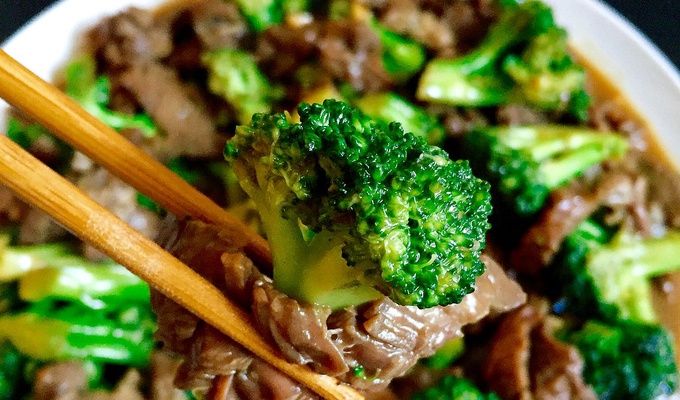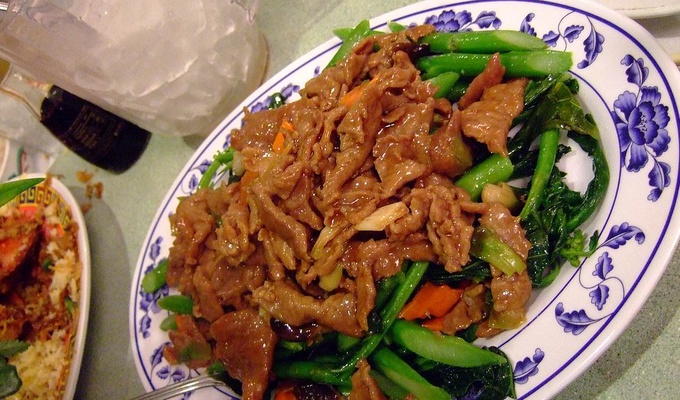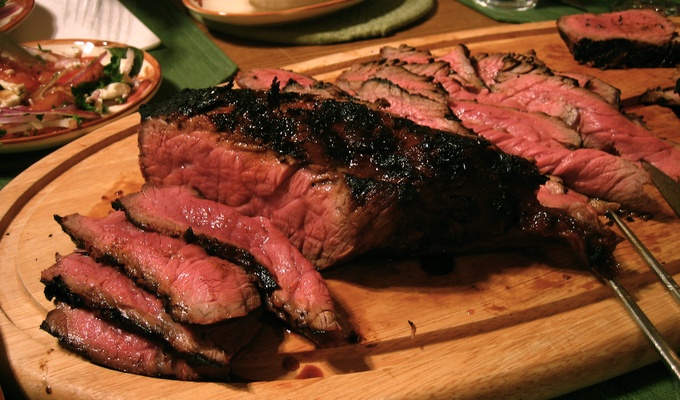Flank steak is a cut of beef steak taken from the abdominal muscles of the cow, located just behind the plate and in front of the rear quarter. It is a long, flat cut with a significant grain that is known for its chewiness and thinness. As a popular food, flank steak is referred to differently across the globe and is prepared in a variety of ways in different cultures (one popular example being carne asada).
In Brazil, flank steak is called bife do vazio or pacú (many people confuse it with fraldinha, which is actually the flap steak). It is popular in south Brazil, specifically in Rio Grande do Sul state. The cut is also common in Colombia, where they call it sobrebarriga ("over the belly"); sobrebarriga a la brasa is a Colombian recipe for braised flank steak. Both Argentina and Uruguay call flank steak churrasquito de vacío or bife de vacío. In Spain and Cuba, flank steak is often referred to as falda. In many countries, the names flank steak and skirt steak are often used interchangeably, yet they are two different cuts of beef. For example, skirt steak is also referred to as sobrebarriga in Colombia, despite it coming from the plate of the cattle, opposed to the flank.
Flank steak is used in the London broil dish and as an alternative to the traditional skirt steak in fajitas. More specifically, Carne Asada often contains flank steak instead of skirt steak. Flank steak can be grilled, pan-fried, broiled, or braised for increased tenderness. Grain (meat fibre) is noticeable in flank steaks. As a result, chefs must cut across the grain to make the meat more tender and result in a smooth cut. Flank steak is often used in Asian cuisine and is commonly sold in Chinese markets as "stir-fry beef." It is also served in French cuisine as an at-most medium-rare steak. Flank also serves as a common cut for steak jerky and is often enjoyed as a more expensive jerky option.
The process of cooking a flank steak is very similar to that of a skirt steak and other thin meats. Although flank steak is thicker and less marbled than skirt steak, both require seasoning and marination as a first step. Flank steak requires a grill to be preheated on high heat and takes longer to cook than skirt steak – usually approximately 1-2 minutes longer per side. Lastly, it requires a cut against the grain to result in its signature thin pieces.


